Fuld Fellowship Trains Eyes on Patient Safety and Quality
As many as 440,000 people die from preventable medical errors every year, according to a study recently published in the Journal of Patient Safety, making it the third-leading cause of death in the United States, behind only cancer and cardiovascular disease. Few understand the urgency behind these startling statistics better than Fuld Fellows, a team of Johns Hopkins School of Nursing students charged with addressing what ails the healthcare industry.
Funded by a grant from the Helene Fuld Health Trust, the program aims to prepare 200 new clinical nurses over five years (beginning in 2012) to develop the leadership skills and solid clinical foundation to improve care. “The Fuld Fellows are making an immediate difference in terms of contributing to the patient safety and quality engine at Hopkins. They’re having a direct impact on improving healthcare delivery—now,” says Associate Professor Cheryl R. Dennison Himmelfarb, PhD, RN, ANP, director of the Helene Fuld Leadership Program.
Fuld Fellows are empowered to question existing safety and quality practices and emboldened to recommend new ones. Four Fuld Fellows, past and present, reveal how the program prepares them to make informed decisions that lead to positive change.
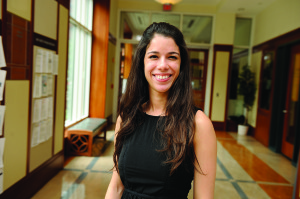
Nicole Carreras Calderon, BS, RN, ’14 (Current Fuld Fellow)
Nicole Carreras Calderon received a bachelor’s degree in chemistry and a master’s in biology and seemed to be on a steady track as a research professional. Employed at several research laboratories, Carreras enjoyed the work but felt she’d be happier doing something else long term. “I became attracted to nursing because I knew it would allow me to help people and effect change more quickly than my research could. Working with zebrafish in the laboratory was fun, but I wanted to make a difference in people’s lives,” Carreras says.
She was admitted to Hopkins Nursing and offered a Fuld Fellowship and her first-choice Fuld project, which aimed to eliminate a dangerous and preventable problem: ventilator-related pneumonia on the surgical intensive care unit. Daily, for about eight months, Carreras recorded patient data on the unit that would help inform clinicians about whether the evidence-based interventions they’d applied to reduce the risk of pneumonia were having an effect.
Only one patient developed a possible case of ventilator-related pneumonia in her time on the unit. The experience left her with a greater sense of confidence about her future career.
“I’ve always been interested in quality and patient safety, but I didn’t know the process of improving things in these areas. It was very important to see how these projects are developed, how the process worked,” Carreras says.
Lee Gilman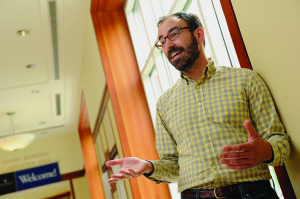 , BSN, RN, ’13
, BSN, RN, ’13
After undergraduate school, Lee Gilman worked in Cambodia on HIV-related policy issues. He also spent time in San Francisco coordinating HIV studies. “I was trying to decide whether I wanted to work on the broader population side of things or whether there was something missing that could be filled with clinical expertise,” Gilman says. As a Fuld Fellow at Hopkins, he found what he was looking for.
“We created this cohesive, core group. The other people selected were really phenomenal,” Gilman says. “On top of that, the program focuses on patient safety and quality. As someone who has worked on the policy side of health care, I feel that quality and safety is of supreme importance.”
With this preliminary understanding, Gilman dove into his Fuld Fellow project. The charge? To assess an existing protocol on managing delirium in an acute setting—in this case, Hopkins’ Oncology Department—and to recommend ways for improving it.
Gilman began by schooling himself in the process of conducting evidence-based research, following guidelines set forth by JHSON. Next came a robust literature review, as Gilman sifted through years of protocols. Then, he compared them with current protocol and “made recommendations based on where the synergy and gaps were for how to update Hopkins’ protocol,” Gilman says.
Many nursing professionals wait years, even decades, to gain the authority to make significant recommendations to how patient care should be managed. Gilman and the other Fuld Fellows do it while they’re students.
Beyond the hands-on research they conduct, Fuld Fellows also undergo a broad education in patient safety and quality models via four courses and a three-day interprofessional course for nursing, medical, and pharmacy students. The blend of classroom learning and practical experience served Gilman well.
“When I discussed quality improvement and patient safety in interviews with potential employers, a light automatically went on across the desk,” said Gilman, who secured employment post-graduation as a nurse clinician in Hopkins’ Department of Medicine.
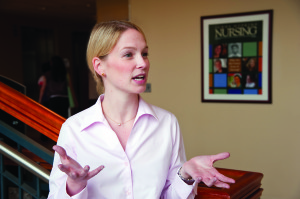 Claire Levinson, BSN, RN, ’13
Claire Levinson, BSN, RN, ’13
Claire Levinson had barely embarked on her career as a medical device representative when she realized the need for change in hospital settings. “I witnessed wrong-site surgeries as a 24-year-old. It was an eye-opening experience in how care can break down. I was like: ‘I can improve this; I know I can,’ ” she says.
She was admitted to JHSON’s accelerated, second-degree nursing program. Simultaneously, she was selected to join the Fuld Fellows Program’s first cohort. Soon after being assigned to her Fuld project, Levinson knew she had made the right decision.
“I’m kind of an adrenaline junkie. I knew I wanted a project in a setting that was exciting, fast-paced,” Levinson recalls.
She was tasked with assisting a new hospital-wide initiative for developing an algorithm practitioners could use to decide if a patient should stay on blood thinners before undergoing surgical procedures. She credits her mentor for the project with giving her the freedom to “own” the project. “He had the idea for the project, and I ran with it,” Levinson says, referring to Sean M. Berenholtz, MD, MHS, FCCM, an anesthesiologist, critical care physician, and patient safety researcher at Hopkins.
The challenging project required Levinson to consider multiple factors from a patient safety perspective. Having patients stop taking blood thinners prior to surgery may increase the risk of blood clots. But excessive blood loss is a risk among patients on blood-thinning medicines during surgery. There’s also the consideration of when to re-introduce blood thinners post-surgery.
Despite the complex project, Levinson flourished with faculty support. “People were so helpful,” she says of the mentoring, another critical piece of the fellowship program. When she had trouble with data templates and understanding certain elements of the algorithm, she sought help from faculty. “I met with four different teachers; they each gave me an hour, easily,” she says.
At the culmination of the project, Levinson presented her findings to 20 surgeons and nurses at Hopkins’ 2013 Patient Safety Summit. In a 25-page PowerPoint presentation, she demonstrated the project’s breadth: input from 12 different disciplines; the paring down of hundreds of pages of pre- and post-surgical anti-coagulant guidelines into one; and observations of 22 patients undergoing elective surgery at Hopkins over the course of 14 months.
Levinson now works in a hospital intensive care unit as a surgical nurse, just as she had planned. Because of her intense experience as a Fuld Fellow, she brings a perspective to her job that’s unique to a recent nursing school graduate. “I’ll be told a patient needs to go to surgery. They’ll say: ‘Stop the anti-coagulant 24 hours before.’ I’ll say: ‘Wait. Let’s have a discussion,’ ” Levinson says. “I bet I’m one of the only nurses that questions a protocol.”
Neisha Williams, BS, RN, ’14 (Current Fuld Fellow)
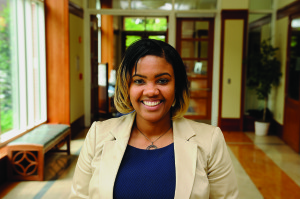 As a pharmacist in her native Jamaica, Neisha Williams witnessed adverse situations in the hospital setting that she felt powerless to change. “Patients can die because of poor care. I thought, ‘If ever I have the chance to effect change, I want to,’ ” Williams says.
As a pharmacist in her native Jamaica, Neisha Williams witnessed adverse situations in the hospital setting that she felt powerless to change. “Patients can die because of poor care. I thought, ‘If ever I have the chance to effect change, I want to,’ ” Williams says.
Fast forward to May 2013. Williams had moved to the U.S., researched career options, and enrolled in Hopkins’ accelerated nursing program.
Through her Fuld research project, Williams once again found herself on a hospital unit. But this time, she was actively involved, helping to improve patient outcomes. Her Fuld project centered on creating electronic software to replace the paper-based process used in discharging patients from the obstetrics/postpartum unit. Implementation of the electronic system resulted in an 86 percent drop in discharge errors. But what Williams gleaned from the experience extended beyond the success of the immediate project, which has since been implemented in a unit at Johns Hopkins Bayview Medical Center as well. It was the communication methods Williams honed during the project, and through the curriculum taught to the Fuld Fellows, that made a lasting impression.
“We had to relate to different professionals. Knowing the right things to say, and trying to get things going at the right time, was essential,” Williams says. She effectively applied the communication methods she learned—such as CUS, short for “I am Concerned, I am Uncomfortable, This is a Safety issue!”—to her clinical rotation in obstetrics.
Williams sees the very specific methods of communication she learned as pivotal to the success of her future career. “I want to be effective in my communication. Knowing how to work as part of an interprofessional team—with doctors, occupational therapists, speech therapists, and others—all of these people could be necessary for the care of one patient. We have to find ways to communicate with them,” Williams says.
Photography by Will Kirk

 Birth Companions Talk Doulas and Maternal Health with Mayor Brandon Scott
Birth Companions Talk Doulas and Maternal Health with Mayor Brandon Scott Global Service Learning: Guatemala
Global Service Learning: Guatemala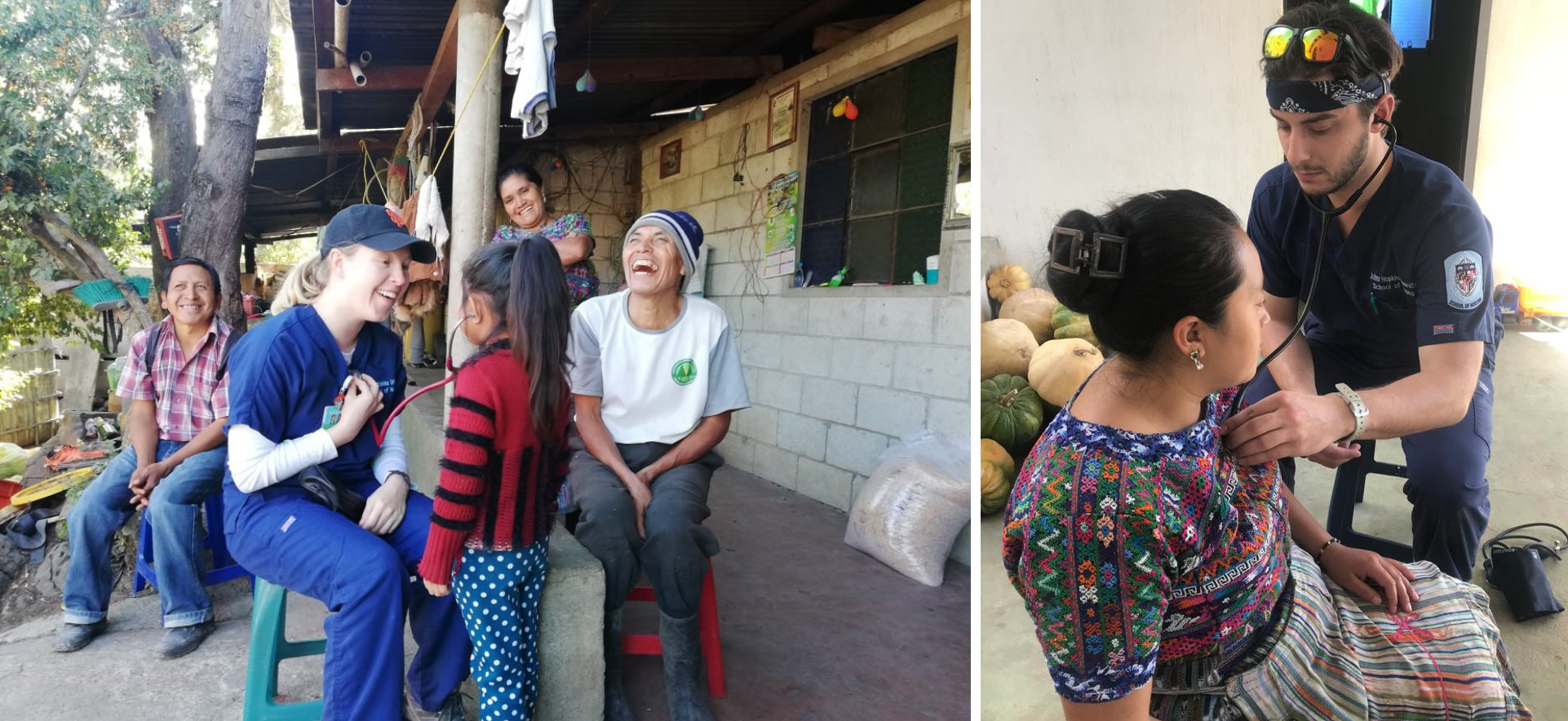 Guatemala Re-visited: Rainwater Project Shows Value of Service-learning Trips
Guatemala Re-visited: Rainwater Project Shows Value of Service-learning Trips You’re Welcome
You’re Welcome My First Teachers in Nursing School Weren’t Nurses
My First Teachers in Nursing School Weren’t Nurses






